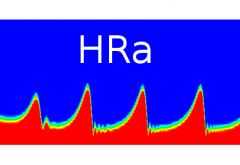I am going to summarise my diploma thesis in plain words. It was a simulation of the ZEUS detector. ZEUS was the name of a collaboration which ran an experiment at the storage ring HERA in Hamburg, Germany. There, electrons and protons of high energy were brought to collision. Around the interaction point was the ZEUS detector covering almost the whole solid angle with the exception of the openings for the beam pipes. The idea for the plug calorimeter was to make the opening in the proton direction smaller. Thus the acceptance of the detector was enlarged. A calorimeter is an energy measuring device. The additional calorimeter was kind of a plug.
My first step was to implement several versions into the ZEUS detector simulation program MOZART. Then I simulated a test beam, i.e. I used a beam of particles of a single type with uniform energy. Finally, I tested with two kinds of electron proton scattering events. It could be demonstrated that these two types of scattering events can be much more easily separated in an analysis with the aid of a plug calorimeter.
A plug calorimeter was eventually built und installed. Finishing this article I want to mention a publication:
Bamberger et al., The ZEUS Forward Plug Calorimeter with Lead-Scintillator Plates and WLS Fiber Readout, Nucl. Instr. Meth. A450 (2000) 235-252 ( http://arxiv.org/abs/hep-ex/9912045 )
